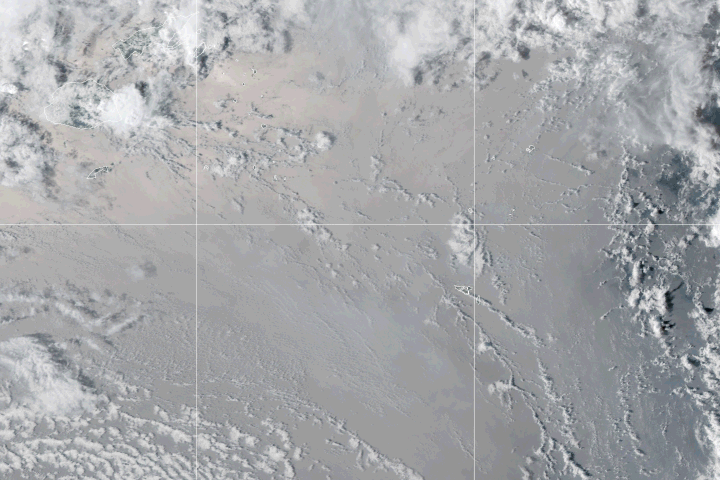Volcanology: the eruption of the Tonga volcano that will make history

But the magma in January 2022 is different. Shane Cronin, a volcanologist at the University of Auckland in New Zealand, and colleagues analyzed ash picked up by disaster workers on Tonga’s largest island. According to Cronin, the new magma rose remarkably quickly – too fast for typical changes in the magma chamber.
Surprising little ashes
Geologist Taniela Kula and colleagues at the Tonga Geological Survey in Nuku’alofa have collected ash samples from islands throughout Tonga, which Cronin and others are analyzing. The height and distribution of the layers also provide information about the course of the eruption. The fact that the volcano released relatively little ash compared to the size of the eruption may be due to the fact that it was submerged, but at a relatively shallow depth.
Volcanic eruptions in deep waters above the surface are rarely seen as large eruptions. The upper water pressure prevents gas bubbles from expanding with the force of the explosion. However, the volcanic vent that erupted at Honga Tonga Hung Hapai on January 15 was only 10 to 250 meters deep. This is shallow enough that the water does not dampen the force of the eruption, but deep enough that the exploding magma collides with a lot of the water.
Then the heat can turn the water into steam in a jiffy, which expands tremendously. The magma’s thermal energy is very efficiently converted into the kinetic energy of a volcanic eruption, says Michael Manga, a geologist at the University of California, Berkeley: “Some of the most powerful volcanic eruptions have been caused by water.” Another important factor is the amount of eruption. The mixing of volcanic gas with magma before it erupts. Raymond Cass, a volcanologist and emeritus professor at Monash University in Melbourne, says the rise of gas-rich magma may have triggered the January 15 eruption by providing a large number of bubbles to erupt.

©NASA/Visible Earth
water vapor effect | Since the eruption occurred at a relatively shallow water depth, the steam generated by the hot magma was able to reveal its full effect.
strange synchronization
Cass says the eruption of the Hunga Tonga-Hunga Ha’apai volcano is a special thing where extraordinary things have happened together. Volcanologists know other examples of eruptions that occurred under water or under snow and ice, in which water also played a major role. Extremely high eruption plumes have also been seen before. However, Hunga Tonga-Hunga Ha’apai is the first known case in which both phenomena occurred together. It likely served as a prototype for a new type of volcanic eruption, Cass says.
“There are relatively few instances where we see large plumes,” says Kristin Furia, a volcanologist at Vanderbilt University in Nashville, Tennessee, on the submarine eruptions. For example, the massive deep-sea eruption of Havre volcano north of New Zealand in 2012 Mainly made a huge carpet of pumice on the ocean. This explosion occurred at a depth of more than 900 meters.

Communicator. Reader. Hipster-friendly introvert. General zombie specialist. Tv trailblazer





